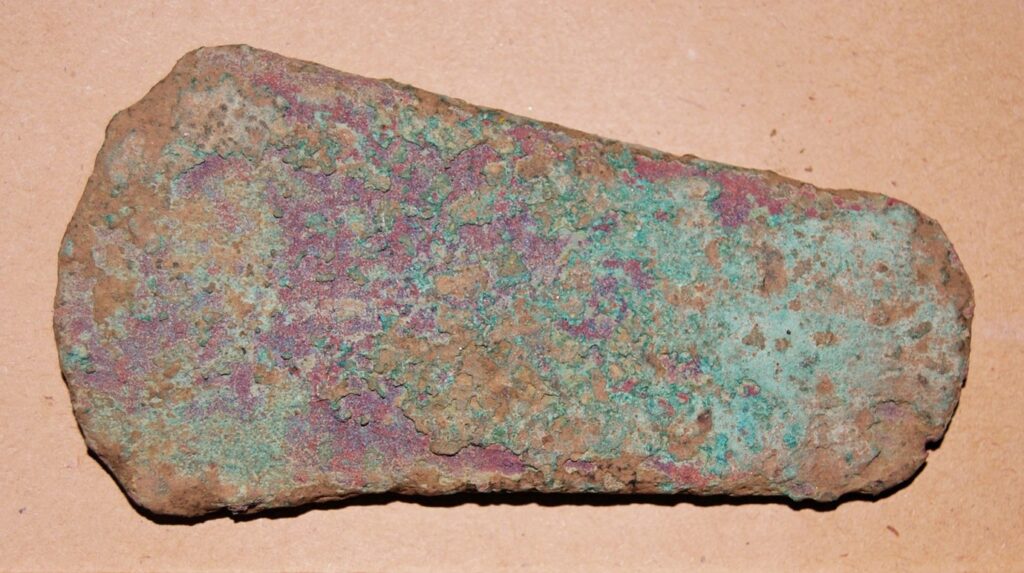
Cup marked stone from Kirkhill (location 1)
This stone decorated with small depressions (cups) was recently found in excavations for a new housing estate at Kirkhill. Stones decorated with cups, sometimes circled with rings, are commonly found in Scotland and northern England, dating from the Neolithic or Bronze Ages. Other examples in the area are from Wester Clunes, Leanach and Kirkton (now lost). Their purpose remains a mystery but suggestions include route or territory markers, astronomical charts or sacred places for offerings.
Image ©AOC Archaeology

Axehead from Balchraggan (location 2)
This copper axehead found at Balchraggan probably dates to around c. 2500-2200 BC when metalworking was introduced to Scotland. The first objects, such as this one, used copper, but, in the Early Bronze Age, tin was added to the alloy to create bronze. The copper probably came from Ireland. The axehead shows that people in the area had the wealth and contacts to access this new technology. The axehead is now housed in Inverness Museum.
Image ©Eric Soane
Cist burial from South Clunes (location 3)

In 1933 a small stone coffin was found containing the body of a young man, together with a Beaker. This new burial practice in a short cist came with immigrants to the area in the Chalcolithic and Early Bronze Ages over 4000 years ago. Many other cist burials are known from the Highlands. At Balblair near Beauly a cist burial contained two Beakers, one large and one small, perhaps for an adult and child. The South Clunes remains are in Aberdeen University Museum, and the Balblair Beakers in Inverness Museum.
Image: Cat. No. ABDUA:14262 in the U. of Aberdeen Museums & Special Collections, licenced under CC By 4.0

Roundhouse, South Clunes (location 4)
The foundation remains of a roundhouse can just be made out in this field at South Clunes. It is likely to date to the Bronze or Iron Age. Roundhouses or, as they are often called on maps, hut circles, were the main type of dwelling in these periods. Few remains survive in Kirkhill Parish, due to later agriculture and forestry. This one has a stone foundation. The remains of a roundhouse found during excavations in Kirkhill in 2021 only showed post holes for roof supports.
ARCH Kirkhill Heritage Project Home Page
Panel 2 – Iron Age to Norse/Medieval (c800BC – 1560AD)
Panel 3 – Reformation to Industrial Revolution (c1560 – Present day)
Panel 4 – Reformation to Industrial Revolution (c1560 – Present day) cont.
Panel 5 – Charlie Gair Photographic Collection – People
Panel 6 – Charlie Gair Photographic Collection – Farming and livestock
Panel 7 – Charlie Gair Photographic Collection – Forestry

